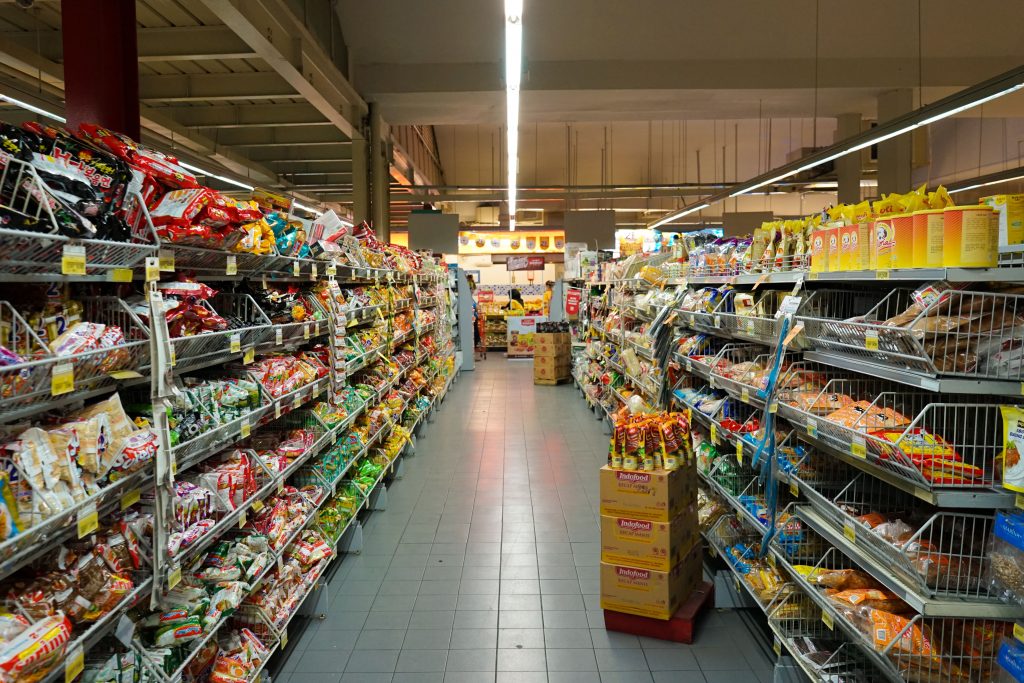All fields are required
Posted in Food Policy on April 8, 2018

Many of us do not have to worry about being hungry, or where our next meal is coming from. But those that experience food insecurity worry constantly about how to obtain healthy food. According to the US Department of Agriculture (USDA), food insecurity is defined as“a lack of consistent access to enough food for an active, healthy life.”
It is important to know that hunger and food insecurity are closely related, but distinct, concepts. Hunger refers to a personal, physical sensation of discomfort, while food insecurity refers to a lack of available financial resources for food at the level of the household. It is a complex problem that most often involves low income individuals and families. In 2016, an estimated 1 out of every 8 Americans were food insecure, equating to 42 million Americans including 13 million children (United States Department of Agriculture, Economic Research Service, 2016).
The Impact of Food Insecurity
It is a most unfortunate statistic that millions of Americans suffer from some degree of food insecurity. Those who are most impacted are people living in low-income communities without access to an adequate amount of fruits, vegetables, and other healthy foods. “On the contrary, what can be found in these areas are convenient stores and fast food restaurants offering cheap alternatives that are exorbitantly high in fat, sugar, and highly-processed foods.As concerns grow over healthcare and the country’s worsening obesity epidemic, “food deserts”—areas where there is little or no access to healthy and affordable food—have catapulted to the forefront of public policy discussions. Policymakers at the local, state, and national level have begun recognizing the role that access to healthy food plays in promoting healthy local economies, healthy neighborhoods, and healthy people.” (American Journal of Preventative Medicine, 2006).
There are several factors that intervene in the ability of those living in such areas to access adequate and nutritious food, and these are:
Recent Studies and Initiatives to Address Food Insecurity through Sustainable Food Resources
In 2010, a project was initiated by a grant from the USDA Agricultural and Food Research Initiative (AFRI)-Global Food Security program. According to Kristen Park, one of the researchers at the Food Industry Management Program at Cornell University that participated in the project ”The impetus for this study was the development of projects on local and regional food systems that would increase food security in disadvantaged US communities and create viability in local/regional economies.” Furthermore, this expansive study included work with retailers and consumers in the retailers’ neighborhoods. This also included a sample of the retailers’ food supply chains.
In this comprehensive study sponsored by the USDA that included Kristen Park and Miguel Gomez (co-author of the study) various regions in the United States were examined. These researchers looked at a total of 15 different food business in five different states with the purpose of examining the way in which local food products are being introduced into the broader food system along with potential barriers to expanding markets for local foods. In essence, the researchers focused on:
What these researchers discovered has essentially economic implications in terms of the ways that farm products are delivered from farms to consumers. Financial impact to the producers cannot be understated and is a singular distinction in the efficiency of the farm to table paradigm. For example, farms that participate in local food supply chains typically tend to have diversity of products and market outlets, and in some cases, this diversification helps spread out large fixed costs across various revenue streams. Additionally, other farms may indeed be large enterprises that participate in mainstream supply chains and use local supply chains as a residual market.
Implications for Further Development of Local Sustainability
The aforementioned research offers one approach in a complex scenario that addresses the economic sustainability of local farm producers to help ameliorate the problem of food insecurity. According to the research conclusions, “transportation fuel use is more closely related to supply chain structure than the distance food products travel, and product aggregation to reduce per-unit costs is an important determinant of transportation fuel efficiency. Local supply chains require fewer food miles to move products from farm to consumer, but fuel use per unit of product in local chains is often greater than in the corresponding mainstream chain. In these cases, greater fuel efficiency per unit of product is achieved with larger loads and logistical efficiencies that outweigh longer distances.”
Again, the difficulties in approaching food insecurity are myriad and economic restraints are commonplace. With continued research into economic factors and logistics that act as a determinant in accessing nutritious food for individuals who are food insecure, progress, slowly but surely, will be made.
By: Kerry Bazany